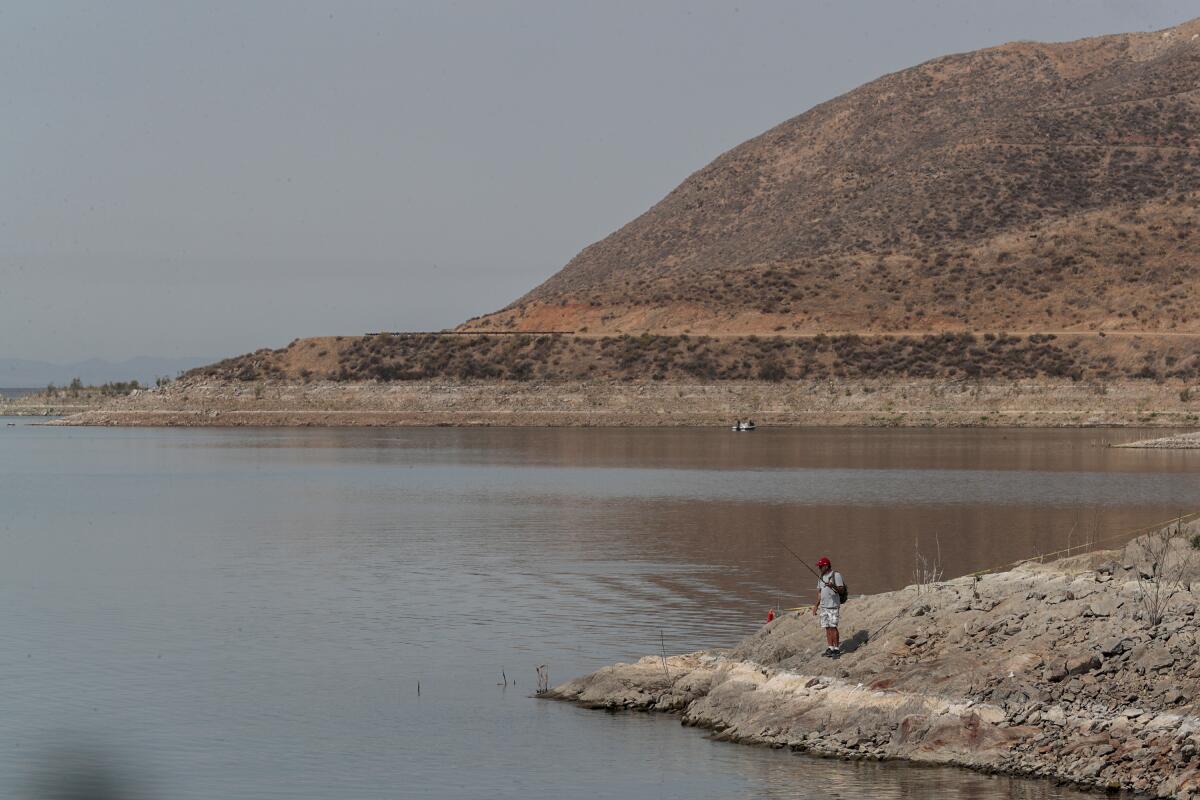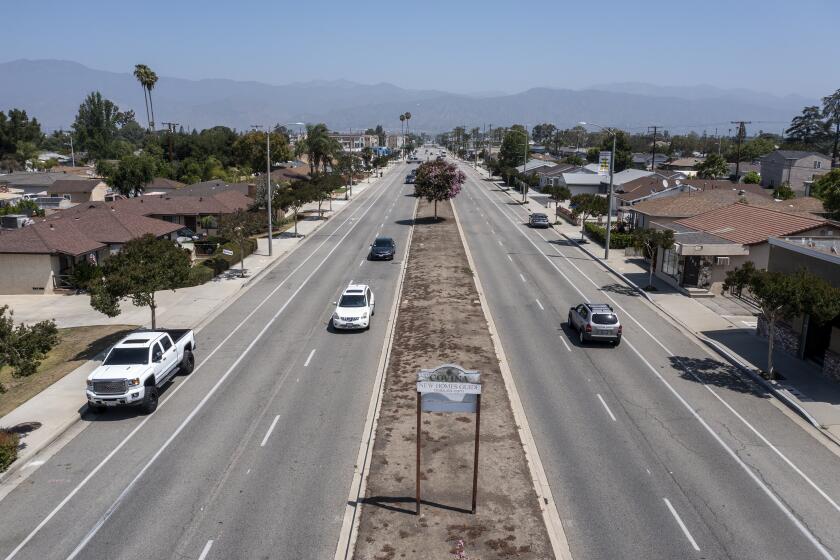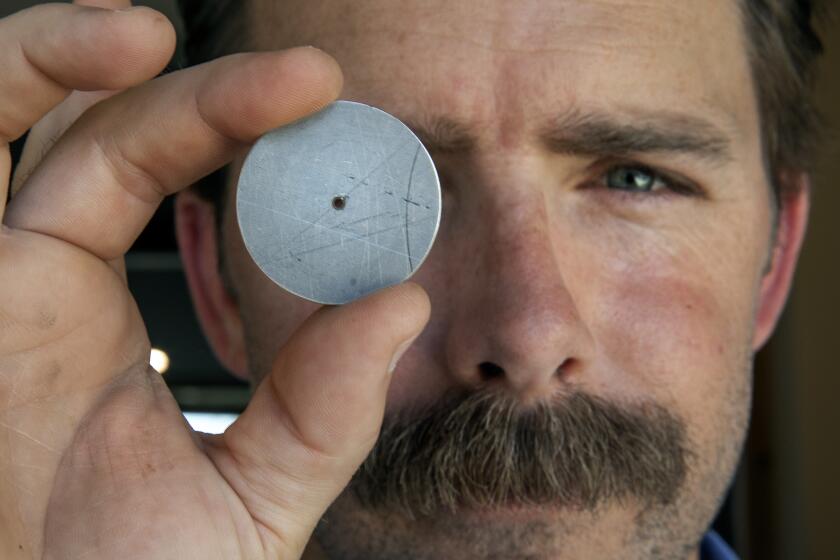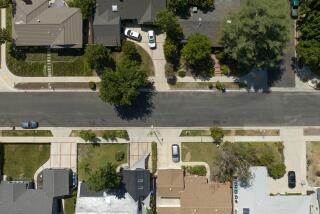Parts of Southern California used 26% more water in April, despite conservation pleas

Coastal Southern California increased water usage by more than 25% for the month of April, lagging behind most other parts of the state in conservation and appearing to dismiss dire warnings of supply shortages.
According to data released Tuesday by the State Water Resources Control Board, cities and towns in the South Coast hydrologic region — an area that includes Los Angeles and more than half the state’s population — used 25.6% more water in April than in April 2020, the first year of the current drought.
Statewide, urban residents used 17.6% more water, marking a small decline from March, but still far less than what officials say is needed to weather a historic drought.
The poor numbers in Southern California put more pressure on residents to follow sweeping water restrictions that went into effect on June 1, and were ordered by the Metropolitan Water District.
“These are not the numbers we wanted to see, and they are not the numbers we need to see,” MWD general manager Adel Hagekhalil said in a statement Tuesday. “We are in an unprecedented situation, where our water supplies from the State Water Project are so limited by drought and climate change that they do not meet demands. Southern Californians must decrease their water use. I know we can do it.”
Dozens of water agencies, including the Los Angeles Department of Water Power, reduced residents to either one- or two-day-a-week outdoor watering in response to the MWD’s order.
But while those numbers have yet to be reported, some signs are pointing in the wrong direction. The cumulative savings from last July — when Gov. Gavin Newsom called on Californians to voluntarily cut water use by 15% — to the end of April were just 2%, officials said.
A statement released by Newsom’s office described the latest conservation numbers as “disappointing” and warned that stronger measures were on the table.
“The governor has made it clear that if we do not start seeing increased conservation across the state there may be a need to move to mandatory state water conservation measures,” the statement read. It noted also that California was heading into summer with below-average reservoir storage and nearly no Sierra snow.
During California’s last severe drought, then-Gov. Jerry Brown imposed statewide cuts to relative success. This time around, officials had been hoping to delegate control to local and regional agencies, with clearly mixed results. While the South Coast’s numbers were disheartening, the Colorado River hydrologic region in the southwestern part of the state did even worse, with a reported usage increase of nearly 41% in April.
Peter Gleick, co-founder and president emeritus of the Pacific Institute, said he was disappointed by the numbers but not terribly surprised.
“I feel like our state officials have not rung the alarm bells the way they need to to help the public understand, first of all, that it really is a crisis, and second of all, that there are things they can do and should do,” he said.
As it stands, California now sits in a perilous position as it heads into the hot, dry months of summer, Gleick said, with the likelihood of wildfires, dried-up wells, fallowed farmland and dead salmon all increasing along with the heat and dryness.
“We’re in unprecedented conditions historically, and that does hint that maybe our responses ought to be unprecedented as well,” he said.
The latest U.S. Drought Monitor update, published Thursday, shows about 12% of the state is now under “exceptional” drought, the worst possible category, up from 0% just three months ago.
More than 97% of the state is under extreme, severe, or exceptional drought, the three worst categories, the monitor shows.
Those conditions are “unlikely to improve,” deputy director Erik Ekdahl told the water board during its meeting Tuesday.
“Expect things to intensify over the next couple of months,” Ekdahl said, noting that reservoirs probably won’t receive any more precipitation until at least the start of the next water year in October.
What’s more, the latest temperature outlook from the National Oceanic and Atmospheric Administration shows above-normal temperatures in California for the next month, Ekdahl said. Much of the state is bracing for a heat wave this week, with Sacramento forecast to hit 105 degrees on Friday.
More than 6 million Southern Californians will be placed under new drought rules today in an unprecedented effort to conserve water.
But the outlook wasn’t all grim. A spot of rain in April helped break the state’s dry streak and “somewhat mediate residential use,” said Marielle Rhodeiro, a research data specialist with the water board.
Two Northern California areas, the North Coast and North Lahontan hydrologic regions, posted gains in April, saving about 14% and 10% respectively, while the San Francisco Bay Area reported no change.
Water board chair Joaquin Esquivel also underscored that 2020, the comparison year, had some of the lowest-ever recorded water usage. When compared to 2021, residents in April used about 7 gallons less per person per day, he said.
“Having that year-over-year reduction from last year is at least heartening,” he said.
Though it’s been less than a week since the MWD’s order kicked in, at least one water agency, the Las Virgenes Municipal Water District in western L.A. County, said it is already seeing signs of improvement.
“We are fortunately beginning to see some real savings,” Las Virgenes general manager David Pedersen told the board Tuesday. The agency last week began installing flow restriction devices at the homes of water wasters and repeat offenders.
“I know we have looked at the numbers statewide and within our region, and I know at times they’ve been unimpressive, and I’m happy to see that in even the last few weeks, we are seeing water demand significantly decrease in our district, to the tune of about 30, 40%,” Pedersen said.
In one wealthy Los Angeles County enclave, 70% of water is used outdoors. Officials hope to curb chronic overuse with these custom flow restrictors.
Still, experts and officials had been hoping for better statewide results.
“It’s unfortunate to see [those numbers] considering the dire state we are all in, and the fact that some of our reservoirs are still experiencing low storage and we don’t really have a lot of snowpack left to refill them,” said Newsha Ajami, a water researcher at Lawrence Berkeley National Laboratory. “I’m hoping that now these restrictions have gone into place, we’ll see a different story coming down into May.”
Ajami said it still makes sense for local agencies to have a leadership role in the conservation process — particularly since they’re the ones who ultimately manage what comes out of people’s taps — but that “good, strong messaging from the top can obviously be very helpful.”
“It’s not just responding to this specific drought, but it’s how, long term, you can change the pattern of use and build resiliency,” she said.
To that end, the state water board last month took the step of banning irrigation of “nonfunctional grass,” or grass that is purely decorative, at businesses and in common areas of subdivisions and property controlled by homeowner associations.
Regional water agencies are also continuing to push rebate programs for lawn replacement and high-efficiency appliance upgrades.
“Given the increased aridity that we know we face ... this isn’t just about this drought,” board chair Esquivel said. “It is really about continuing to shift our landscapes to be reflective of the reality of the climate we live in now, let alone what we’ll be facing in the next decade.”
Many of the state’s residents will still face a long, challenging season, particularly as local and regional reservoirs continue to dip toward record lows. Lake Oroville — the largest reservoir in the State Water Project — was at 53% capacity on Tuesday.
During the meeting, officials said the dry conditions will likely trigger additional curtailments of water rights in the San Joaquin watershed and Russian River, among other tributaries in the state. Drought program response manager Eric Zúñiga also sounded the alarm about “a steady entry of new dry wells reported on an ongoing basis.”
“Even though the rate hasn’t necessarily increased, it’s a really steady drumbeat of continual dry wells reporting, indicating that status quo is is not necessarily a good status, either” he said.
Edward Ortiz, a spokesman for the water board, noted that the state’s exceptional dryness has also compelled many people to water more, not less, than they did in 2020.
“Transitioning to more efficiently irrigated, California-friendly landscapes would dramatically reduce this need,” he said.
Officials hoped the combination of efforts would add up to some savings, with Rhodeiro noting that “one or two storms is not enough to erase an overall deficit over the course of the water year. “
“If it’s as dry or drier than last summer, then water conservation and efficiency is going to be even more critical,” she said.
More to Read
Sign up for Essential California
The most important California stories and recommendations in your inbox every morning.
You may occasionally receive promotional content from the Los Angeles Times.













